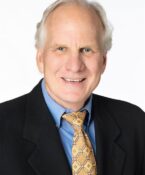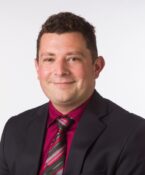Want Health Reform? Stay Well!
As usual, Ben Franklin was right when he said, "An ounce of prevention is worth a pound of cure." In those 10 small words, he encapsulated everything we need to know about better health. But sadly, as a nation, we’ve failed to listen. And now this advice may lie at the heart of health reform.
Our people are fat and getting fatter. The toll of this trend–diabetes, hypertension, heart disease and some cancers– is needless loss of life and a financial impact of more than $2 trillion a year in health care – almost 50 percent more per person than the next most costly nation. An estimated 75 percent of those health care costs go to treat chronic, conditions including heart disease, diabetes, prostate cancer, breast cancer and obesity, which are all largely preventable by changes in nutrition, physical activity and lifestyle.
Yet for all this spending, the quality of our care is often lower, and we aren’t any healthier. In fact, citizens in some countries that spend less than we do actually are living longer.
If Ben were still around, he’d surely be appalled.
In a nutshell, our problem is that our health care system is built on the concept of providing disease care, not wellness care. We reward fixing what’s gone wrong, rather than rewarding behaviors that prevent things from going wrong in the first place. Study after study shows that preventive measures like a better diet, regular exercise, smoking cessation and stress reduction programs can have a positive effect on health and even reduce and reverse the progress of chronic disease.
Those positive results aren’t news to those who believe in the benefits of osteopathic medicine. Back in 1870, the discipline’s founder, Dr. Andrew Still, promoted the idea that physicians should focus on treating the whole patient, rather than just the disease. He recognized the body’s ability to heal itself and stressed preventive medicine, eating properly and keeping fit. He also eschewed the use of drugs common to the day, many of which were worthless "patent" medicines.
America’s 60,000 DOs (Doctors of Osteopathic Medicine) make up just 8 percent of the nation’s total number of practicing doctors. But that balance is beginning to shift, as nearly 20 percent of today’s medical students choose osteopathic medicine, compared to just 5 percent nearly 30 years ago. And the increasing awareness about prevention as well as primary care is promoting greater overlap between the two philosophies, proving that what’s good for the medical profession is also good for the patient.
Today’s Americans stand to benefit from this increased synergy, especially the theme of prevention, when you consider that an estimated 40 percent of premature deaths are caused by lifestyle choices like poor eating habits, smoking and inactivity.
Prevention was also the major theme in the recent "Health" issue of Time magazine (June 22, 2009), which cited the 1,100-bed Cleveland Clinic as a model of high quality care based on the concept of wellness. Dr. Delos Cosgrove, CEO of Cleveland Clinic, believes that healthy behavior should be rewarded and people should think about health as a self-responsibility and an investment.
The idea of wellness as an investment makes sense. After all, sick employees cost employers in terms of higher insurance premiums, sick days and lower productivity. Conversely, by preventing preventable diseases, we could save billions … plus save lives.
In a speech on June 15 to the American Medical Association, President Obama said, "Building a health care system that promotes prevention rather than just managing diseases will require all of us to do our part." As physicians, we must do our part by telling patients about risk factors to avoid and what preventive measures to pursue. Employers can do their part by creating wellness programs that reward workers for taking better care of their health while reducing health care costs in the process. Communities can do their part by building bike paths and walking trails, getting junk food out of our schools, and increasing the amount of physical activity our children get. And individuals must do their part by taking better care of themselves and heading off health issues before they become expensive and debilitating problems.
Ben Franklin would surely approve.
Scott Ransom is president and professor in obstetrics, gynecology, health management and policy at the University of North Texas Health Science Center at Fort Worth.





Social media